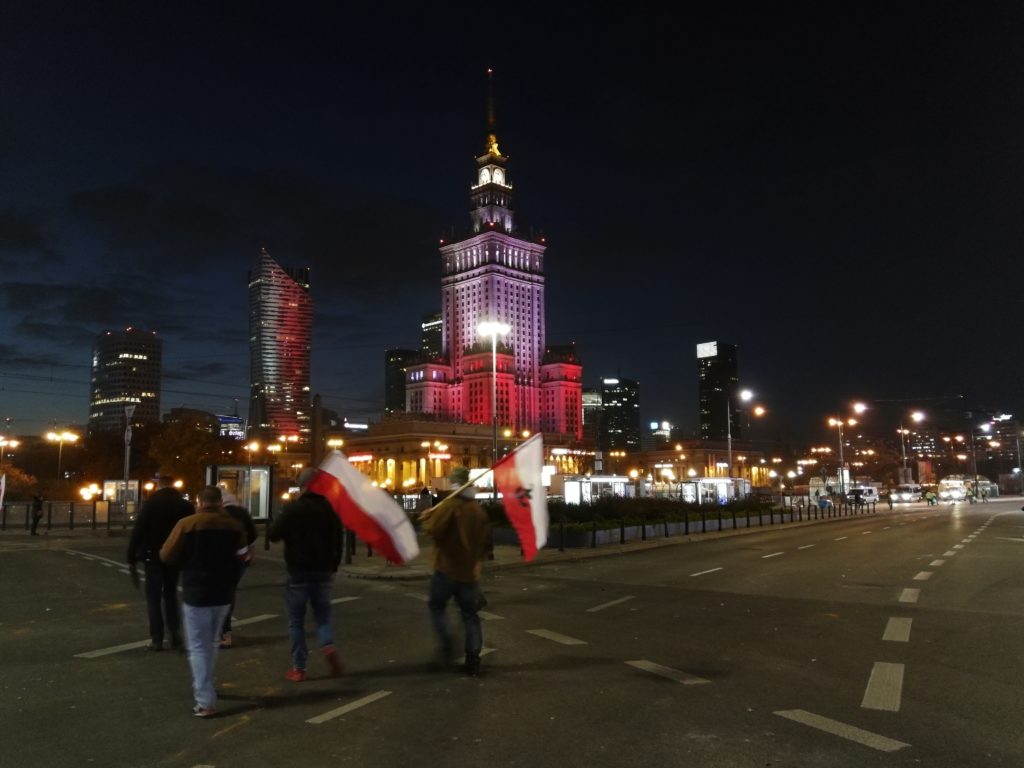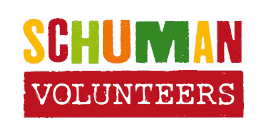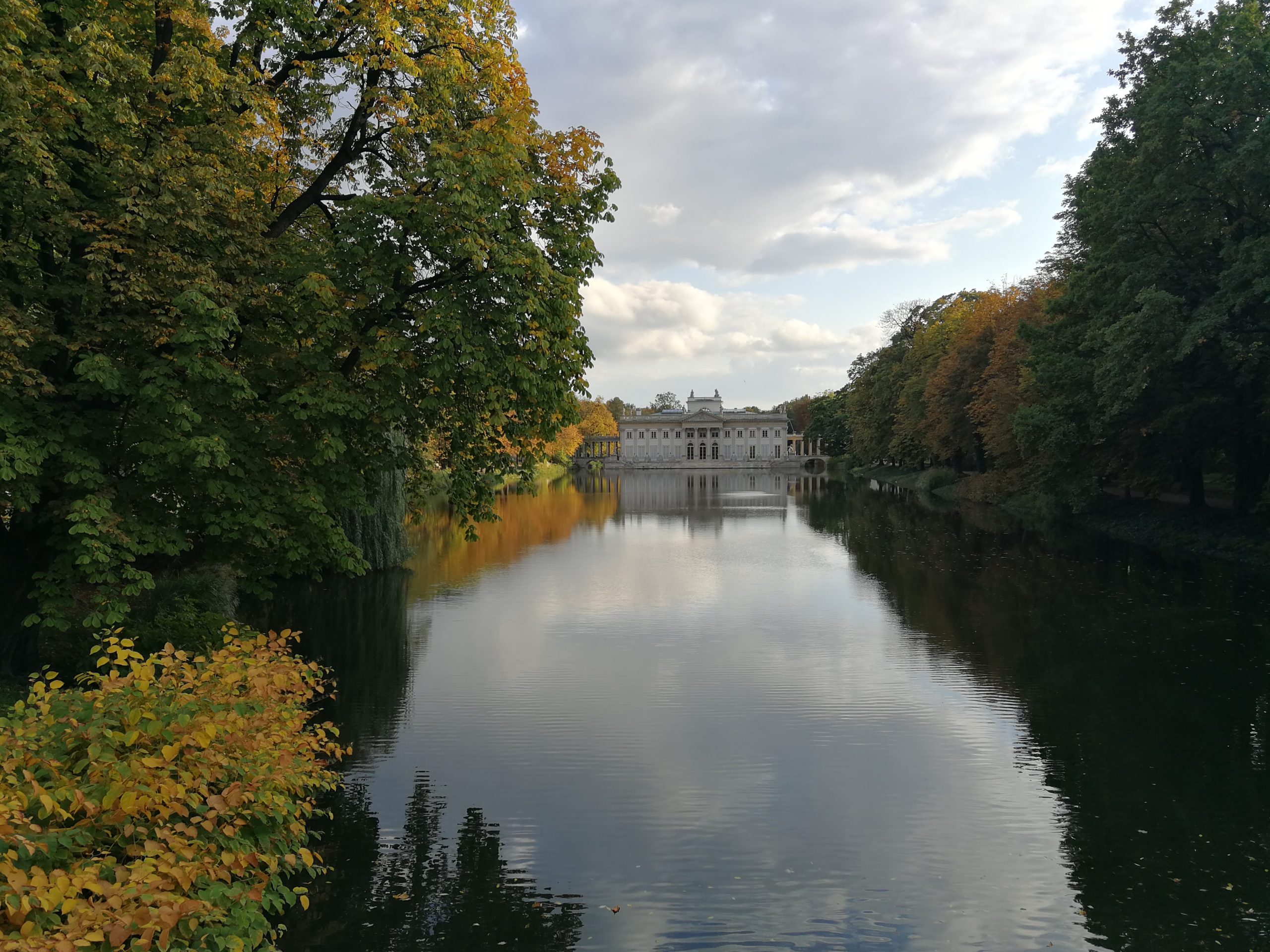“Ku*waaa!” The man behind me is slurring at the referee who just blew the whistle after a foul. The free kick afterwards results in nothing spectacular. The man sits down again. On the left side, the supporters of the away team start to take out their Bengal Flares and Polish flags. The security guards are positioned in the puffer zone ready to intervene. Legia Warszawa wins 5:1 of which we missed three goals because we wanted to buy popcorn.
Three months have passed now since I my arrival to Poland and I was able to travel quite a bit in recent time. I got to see the largest European urban gentrification project in Łódź, eat my way through festive Kraków, enjoy Christmas magic in Wrocław and watch a typical Polish football match in Warszawa. I have learnt a lot about Poland and its culture and people, and I still do. In the following lines, you will get a small insight into the Polish way of life through some scenes and encounters that will put the spotlight on different aspects of the Polish culture.
Łódź, November 1st, 2019
The sun sets over ulica Piotrkowska, one of the longest pedestrian streets in Europe and the center of life in Łódź. No building looks like one another, but they somehow form a perfect harmony of asymmetry. There are few people on the street. It’s All Saints’ Day in Poland, which means that people go to the graveyards to pay respect to dead family members and ancestors.
We leave Piotrkowska street and pass the Manufaktura complex, the former factory of Izrael Poznański, now an entertainment district with a shopping mall, museums, restaurants, a cinema and much more. However, it is not here where you can find all the buzz today, it is a ten-minute walk away, at the graveyard. Approaching this place, the streets get more and more crowded and when we arrive, I am struck by what’s happening there. There are vendors everywhere who sell flowers, candles and food. Two police cars are parked in front of the entrance and there is additional floodlight. I have to remind myself that I am still at a graveyard, not at a funfair.
We continue our stroll through the crowds of thousands who go the same way but have a different aim. After having bought a bit of food we finally arrive at the gates of the cemetery, or rather of the cemeteries as there is not only one but three, one Catholic, one Protestant and one Orthodox. We go by the stream and we see an impressive necropolis with small cathedral tombs, but this is not what we were looking for. We turn left, pass some rows of dark graves and pass through a narrow hole in the wall. What we now see is an ocean of lights seeming like it ends in infinity, so wonderful that it’s impossible to capture this beauty.
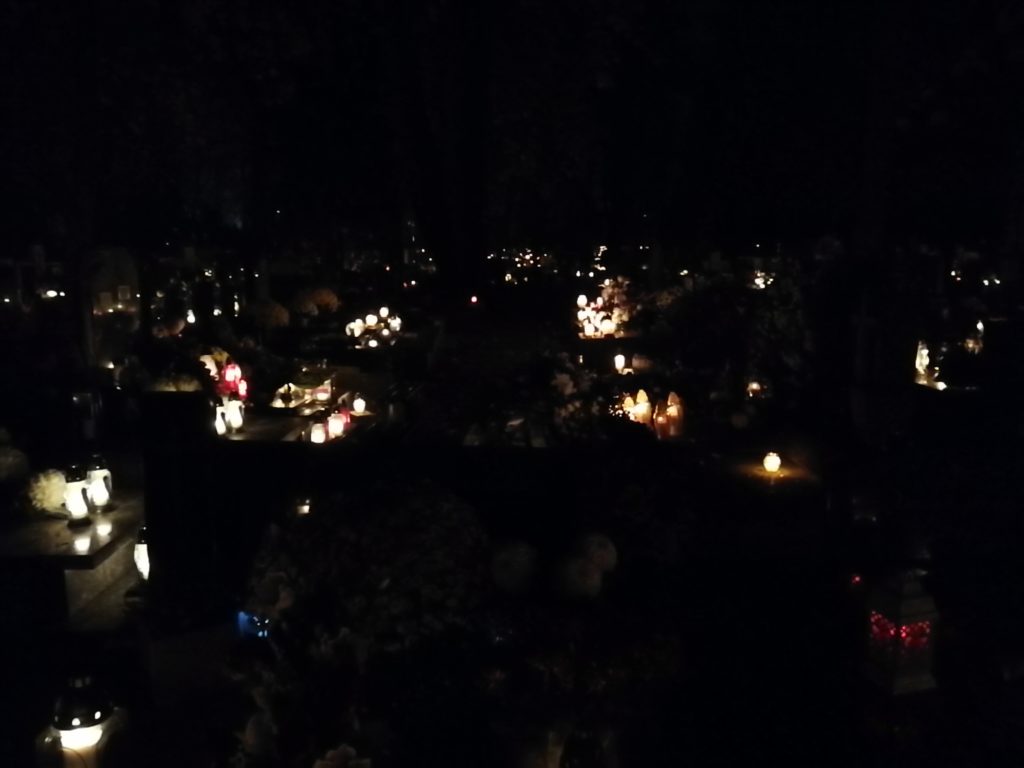
Łódź, November 3rd, 2019
The tunnel is gray, the sky is gray, everything is gray. There’s light at the end of the tunnel: Stutthof, Kulmhof am Mer, Ravensbrück, Sachsenhausen Oranienburg, Gross-Rosen, Auschwitz-Birkenau. We are at Stacja Radegast, the train station of the Litzmannstadt Ghetto. From here, more than 150,000 people were deported to death camps. Because of the very German habit of structuring everything in a clear order, you can still see the lists with the names of the deported people, thousands of pages with names of people who were sent into death. This is so grotesque; the whole place is so unbelievably grotesque.
We continue our walk through the former Litzmannstadt Ghetto towards the Jewish Cemetery, the largest in Europe. It’s here where you can find the tomb of Izrael Poznański, the biggest Jewish mausoleum in the world. He was a textile merchant, once the richest man of Łódź, so rich that he even built his own palace. This is only one of the many examples of the rapid growth of Łódź during the Industrial Revolution. You can only find comparable cities in the New World, but nowhere else in Europe. The population of Łódź grew from 500 inhabitants at the beginning of the 19th century to around 500.000 people in just 120 years. This was only possible because the German, Polish and Jewish families lived together in peace.
What’s going to happen if this cultural peace is broken up can be found 400 meters to the left. 43,527. That’s the number of people killed in the Litzmannstadt Ghetto. It’s just plain field. An endless wasteland with the graves of thousands of killed people, so disturbing that it’s impossible to capture this cruelty.
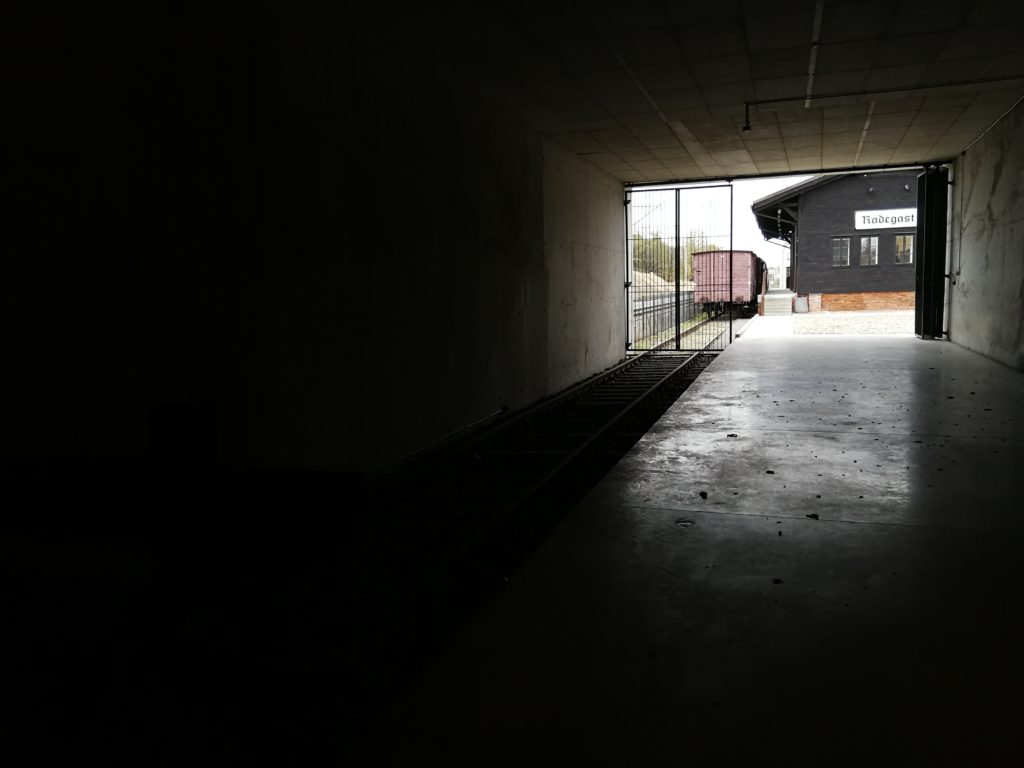
Kraków, November 30th, 2019
“There are no tickets left for today.” The woman at the counter looks at us with a very little portion of pity, maybe because we are young, but it seems like she’s already said the same thing dozens of times. Well, I’ve already seen enough European palaces and castles, so we just go into the cathedral, which is still possible to visit despite the massive amount of people. The visitors come from all parts of the world and you can hear French, German, English and Chinese more than Polish: Welcome to Wawel Castle or I should rather call it Disneyland Poland.
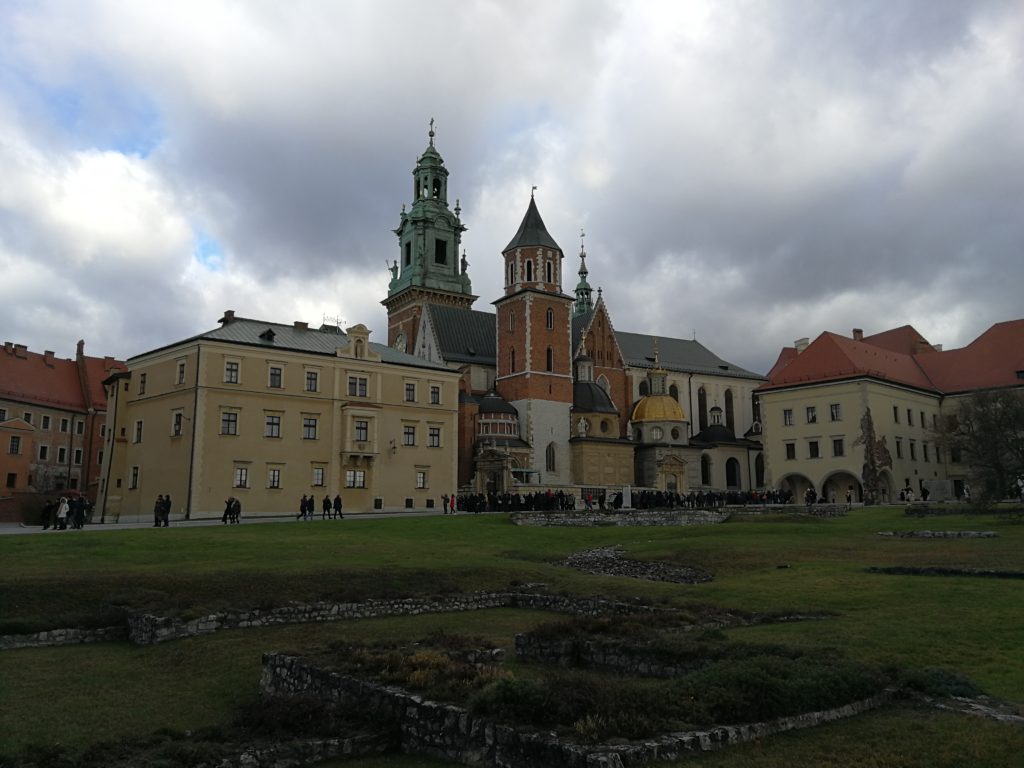
Kraków, December 1st, 2019
25zł for seeing one single painting? Yes, that’s possible. The National Museum in Cracow makes you pay 25zł for seeing their most famous painting. It is also the most prominent painting in the whole of Poland, but still, 25zł. We pay this horrendous sum and there she is, the world-famous Lady with an Ermine by Leonardo da Vinci. The perfection of this painting is unbelievable. The price is still ridiculous, but it’s understandable why this piece of art is known all over the world.
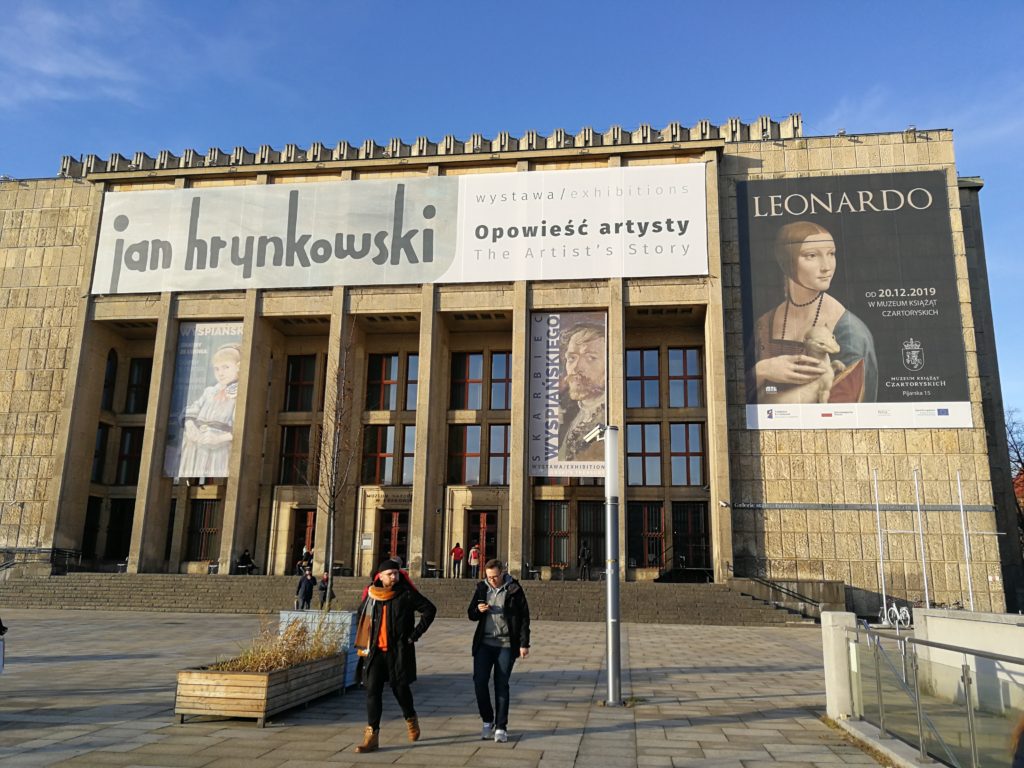
Wrocław, October 23rd, 2019
Wrocław or Breslau?
Before going to Wrocław I had a bit of a struggle, which name I should choose when referring to this Lower Silesian city. Should I use the historical German name, which I had used before, or rather the Polish one?
This question reveals a lot about the turbulent history of this city, and it was also closely connected to our visit. We started with a short introduction to Wrocław’s history at the Rynek by one of the students, which was followed up by a visit to the European House. There, we learned a lot about the work of the European institutions and the importance of the EU, and it is indeed important. Nowadays, there are no more wars about cities like Wrocław because Germans and Poles live peacefully in one Union. In the end, it doesn’t really matter anymore, which name I use because of the reconciliation between these European neighbors.
Afterwards, we discovered the city’s cultural diversity on our own when we walked to other spots in Wrocław’s old town, which students introduced to us. Another very interesting sight was the Centennial Hall, which was built 100 years after the liberation of Wrocław and its reintegration into the German Empire. The traces of so many different cultures can be found all across this city and it is really unbelievable how Wrocław defied all the odds to again become a cultural hub in the middle of Europe. The future looks bright for this city.
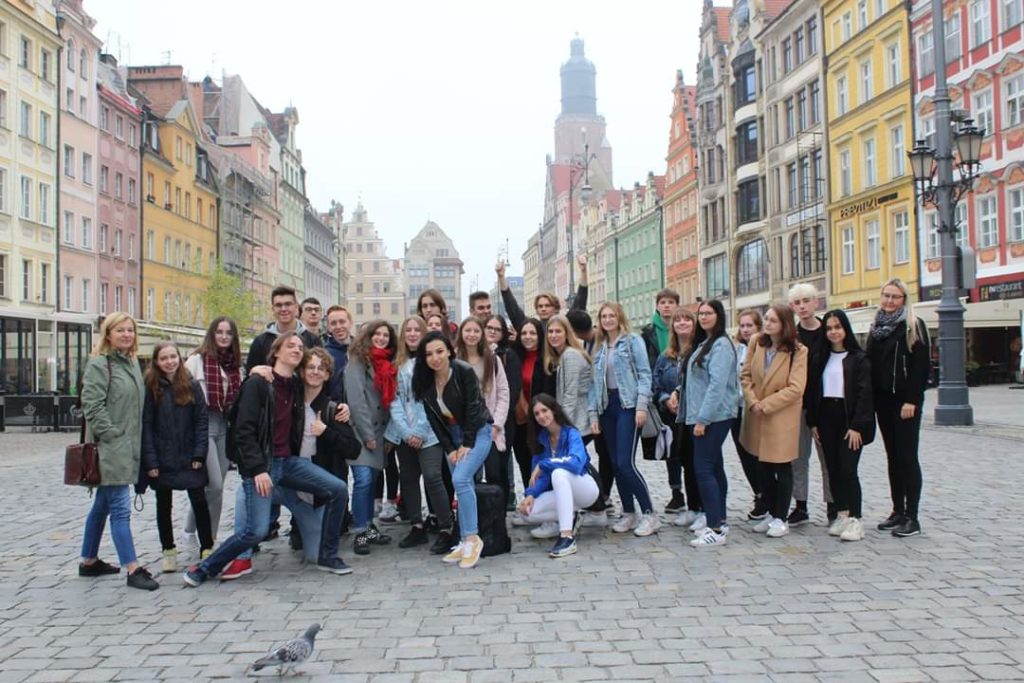
Wrocław, December 8th, 2019
From the Venice on the Odra to Festung Breslau. From immense beauty to great destruction. Like most Polish cities, Wroclaw was almost totally destroyed at the end of World War II. It used to be the third largest city of the German Empire and it was a city of enormous importance for science. 9 Nobel Prize winners like Alzheimer and Schrödinger are from this Lower Silesian metropolis. What was left after 1945? Almost nothing. The Germans destroyed huge parts of the city in order to better defend it. The rest was run over by the Soviets. After the war, the city needed to be polonized. Breslau became Wrocław. What was left of German population was kicked out of the city and the German past was suppressed. The new people of Wrocław brought their own culture from their former home.

Warszawa, November 9th, 2019
It is the symbol of Warsaw, the Eiffel tower or St. Peter’s Basilica of the Polish capital, a monument out of steel and concrete. The Palace of Culture and Science is located next to the central station of Warsaw in the heart of the city. It houses a cinema, several museums, a restaurant, shops etc., an irony of history like the whole city of Warsaw, which is full of contradictions. Warsaw’s Old Town is the only UNESCO World Heritage site in the world which was rebuilt. The symbol of the city is a mermaid although it is nowhere near the sea. The best example is the Palace of Culture though. Calling a socialist building ‘palace’ is already abstruse, but it looks like a palace indeed, which is one of the biggest absurdities. There is really no difference between the interior of a normal European royal palace and the socialist palace in Warsaw. It shows us how obscure ideologies are and teaches us several lessons about megalomania and conformity. Two days later I found out that these issues are still very relevant.
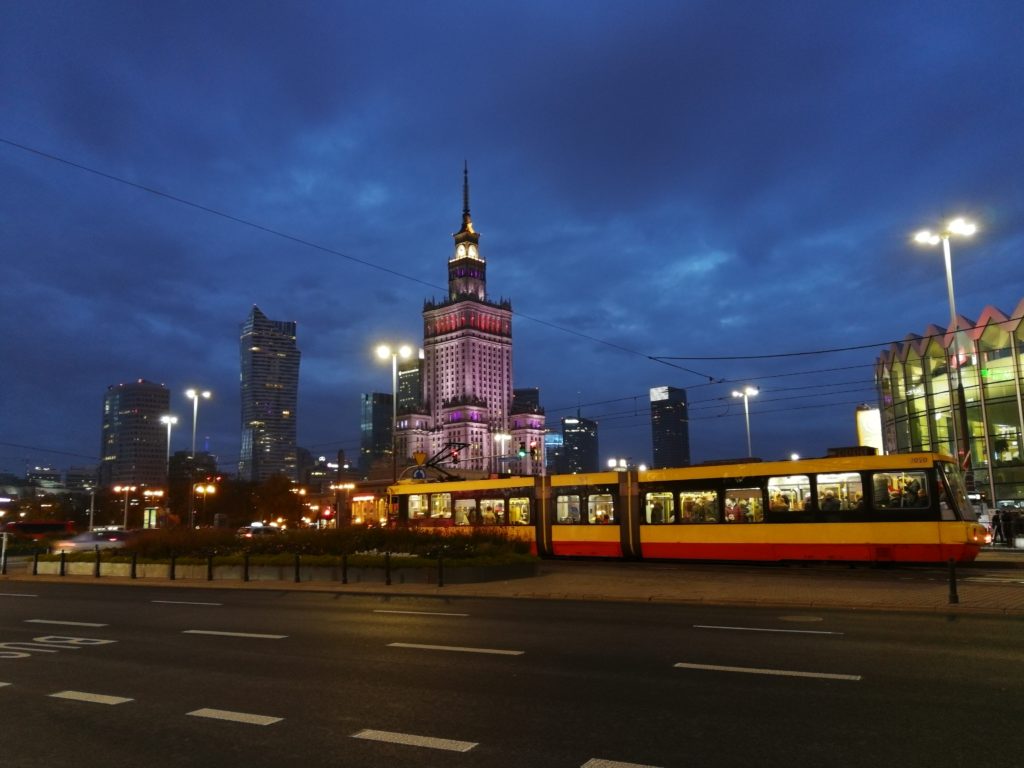
Warszawa, Polska, 11 listopada 2019
The bus is going towards the center. It is getting fuller. People carry flags and wear armbands. You can feel the tension in the air. It is a relaxed and joyful tension, but I’m not if everyone feels this tension. The bus suddenly stops in front of a tunnel and people start to get out, then others follow the stream until the bus is completely empty. I follow this stream up the stairs to the Old Town Square. It is full of people; the street is blocked for cars and there are food stalls lining the boardwalks. I turn left and continue my travel by foot until I arrive at the square in front of the Tomb of the Unknown Soldier. A massive crowd, some tanks and the president await me. He’s having a speech. I don’t understand it, just sometimes a few words like Poland or European Union. I try to find a spot to see him; I can’t because it is so crowded. But then, he finishes his speech and the marching band starts to march into my direction through a wide corridor lined by metal barriers. I finally get a glimpse on him and the prime minister with whom I shake hands later. It is a weird feeling to see those people about whom you’ve been talking a lot in the past because you and many others see them as a threat for Europe and its democracies. Also, we don’t have any parades or national celebrations like this in Germany.
I then leave the big square to see a bit of the family celebrations on Krakowskie Przedmieście. There are lots of people of all ages and the atmosphere seems relaxed and just very nice even for me as a foreigner. Suddenly, police cars are stopping in front of me to block the streets and it looks like the president or another ‘important’ person will drive by, but no it’s something completely different. Traditional horse carriages make their way up the small side street and then turn onto the grand boulevard. The people on the carriages wear traditional Polish folk clothing, they wave and the spectators, especially children wave back. There is even somebody dressed up as Józef Piłsudski, the autocratic leader of Poland between the two World Wars who’s regarded as a national hero. In this moment, I’m glad that I came here to witness the celebrations for the Polish Independence Day.
However, when I leave the family celebrations to approach the Palace of Culture, I’m starting to get this tense feeling again that I was having in the first place before arriving in the center. I’ve spent much time on reading articles and doing research about the Independence March as I was really worried about going there. The photos of the last year did not deter me from going there in the end, but I was a bit scared. What kind of made me a bit relieved, was that many parents brought their children and when there are children, then it should not be that scary, at least that’s what I was thinking. Few minutes later, I arrive at the square in front of the Palace of Culture and what I see is white and red smoke and what I hear are constant explosions.
